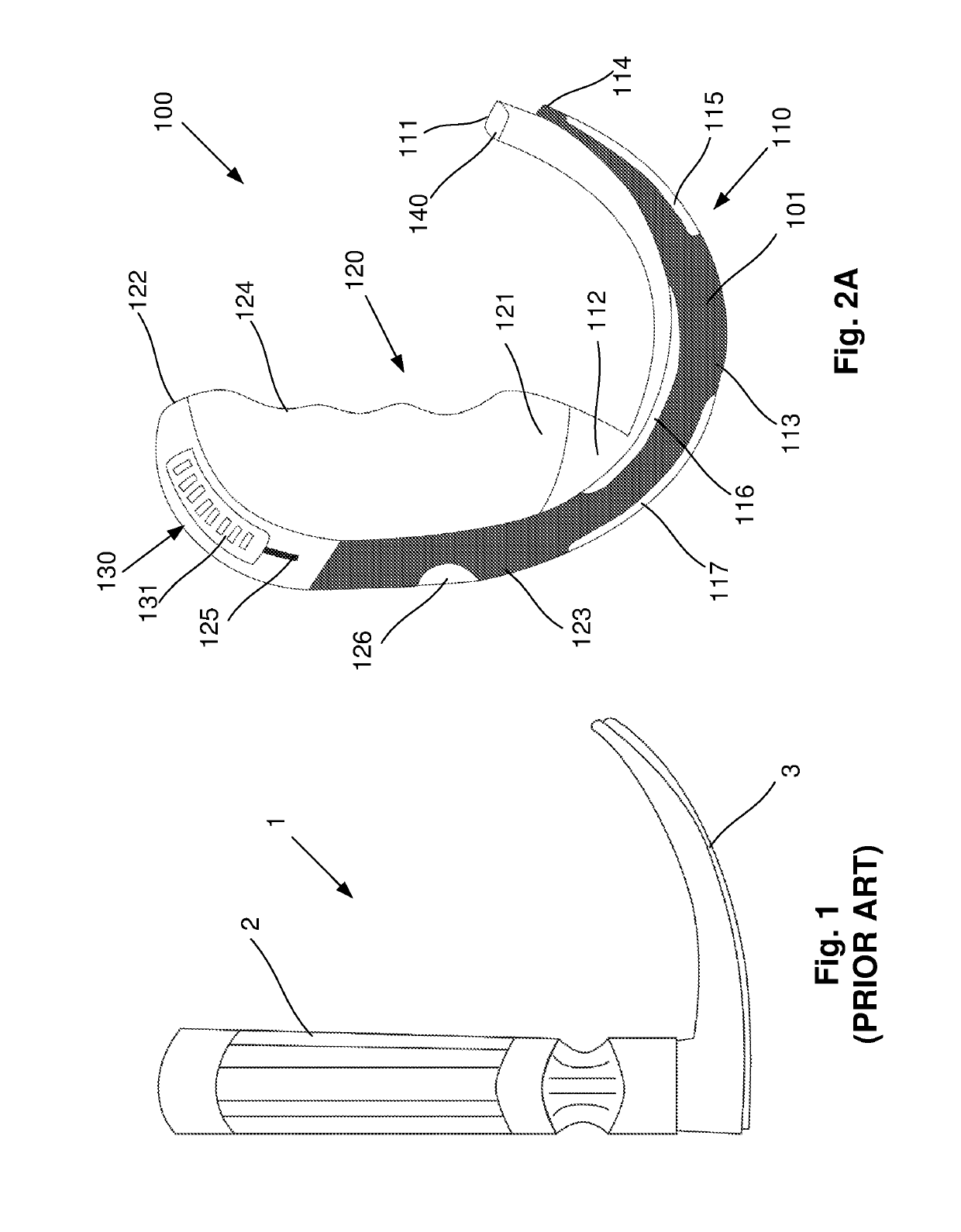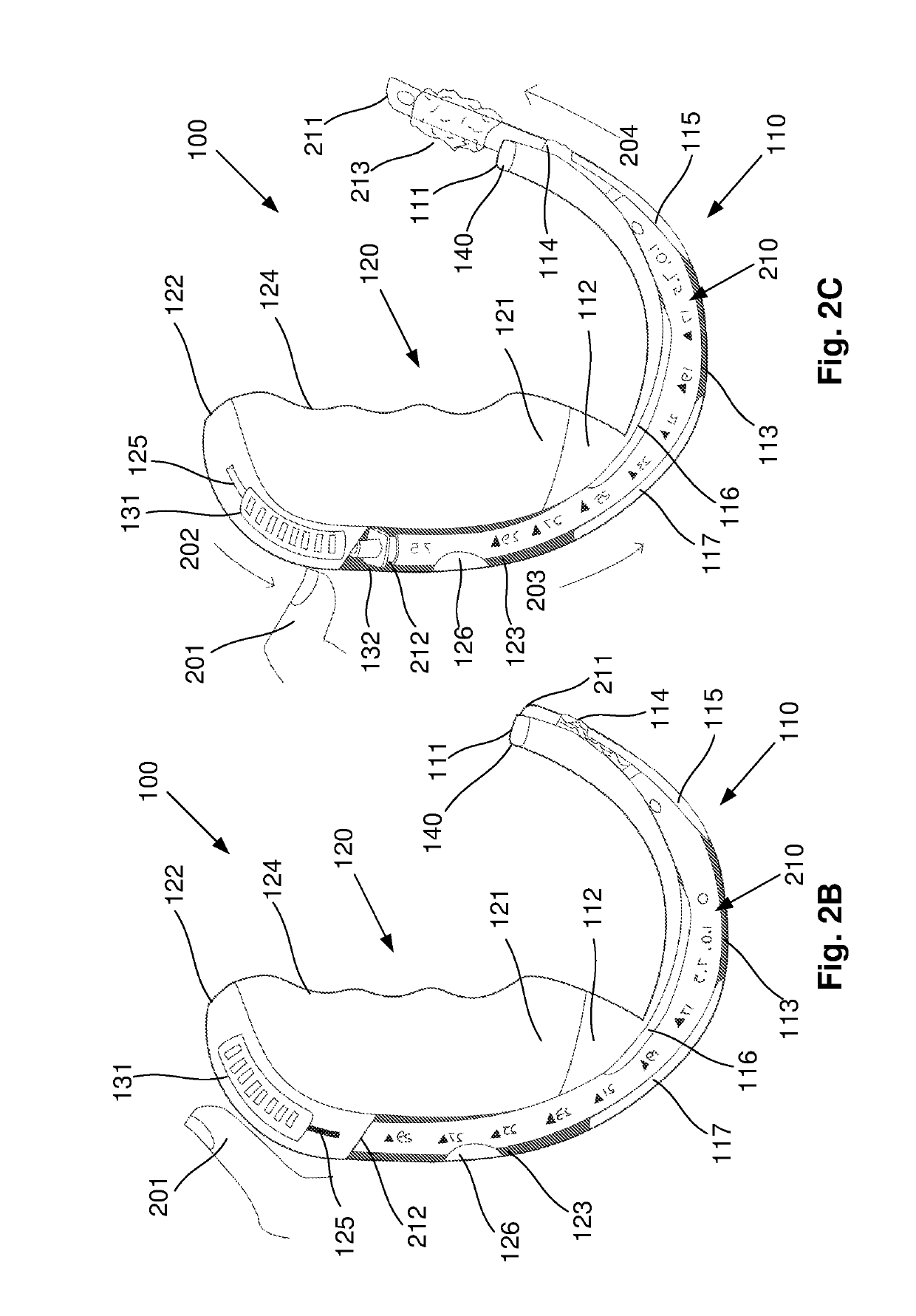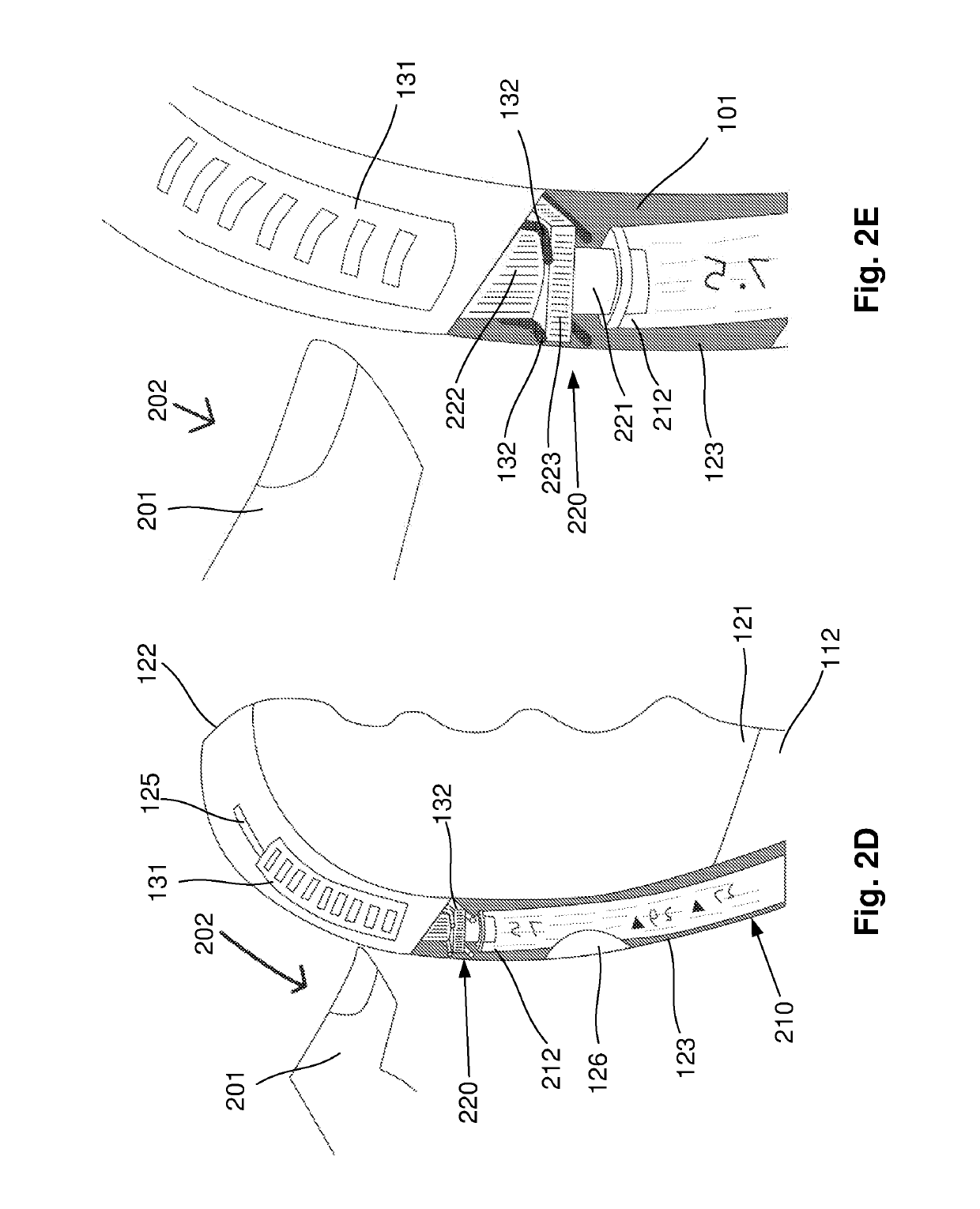Intubation device
a technology of intubation device and trachea, which is applied in the field of intubation device, can solve the problems of death or disability, inability to achieve, and considerable skill, and achieve the effect of endotracheal intubation, and sometimes inability to achiev
- Summary
- Abstract
- Description
- Claims
- Application Information
AI Technical Summary
Benefits of technology
Problems solved by technology
Method used
Image
Examples
Embodiment Construction
[0091]An example of an intubation device 100 for use in an endotracheal intubation procedure will now be described with reference to FIGS. 2A to 2G.
[0092]With regard to FIG. 2A, the intubation device 100 includes a laryngoscope blade 110 having a tip 111 and a base 112. A handle 120 is attached to the base 112 of the blade 110 for allowing the intubation device 100 to be held in a hand of a user.
[0093]The intubation device 100 also includes a channel 101 for receiving an endotracheal tube 210, as shown in FIG. 2B. The channel 101 includes a blade channel portion 113 extending along the blade substantially from the tip 111 to the base 112, and a handle channel portion 123 extending partially along the handle 120 from the blade channel portion 113. The blade channel portion 113 includes an outlet 114 proximate to the tip 111 for allowing a distal end 211 of the endotracheal tube 210 to be advanced from the outlet 114, as shown in FIG. 2C.
[0094]The intubation device 100 further include...
PUM
 Login to View More
Login to View More Abstract
Description
Claims
Application Information
 Login to View More
Login to View More - R&D
- Intellectual Property
- Life Sciences
- Materials
- Tech Scout
- Unparalleled Data Quality
- Higher Quality Content
- 60% Fewer Hallucinations
Browse by: Latest US Patents, China's latest patents, Technical Efficacy Thesaurus, Application Domain, Technology Topic, Popular Technical Reports.
© 2025 PatSnap. All rights reserved.Legal|Privacy policy|Modern Slavery Act Transparency Statement|Sitemap|About US| Contact US: help@patsnap.com



